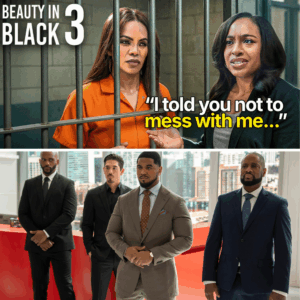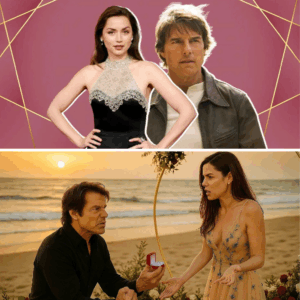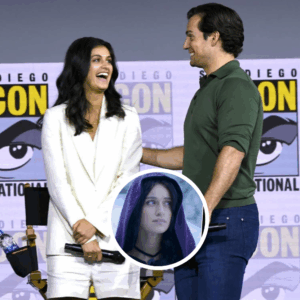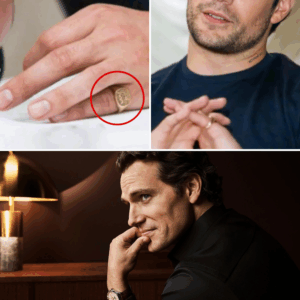In the realm of cinematic action thrillers, few films have left as enduring an impression as Public Enemies, released on July 1, 2009, under the direction of Michael Mann. This biographical crime drama, inspired by Bryan Burrough’s 2004 book Public Enemies: America’s Greatest Crime Wave and the Birth of the FBI, 1933–34, chronicles the final years of notorious Depression-era bank robber John Dillinger. At the heart of the film’s success is Johnny Depp’s portrayal of Dillinger, a role that not only showcased his acting prowess but also cemented his reputation for delivering some of the most striking and memorable costume designs in action cinema. As of June 19, 2025, Public Enemies remains a standout in Depp’s filmography, blending historical authenticity with a stylish edge that continues to captivate audiences.
The Making of an Iconic Role
Public Enemies transports viewers to the gritty 1930s, a time when bank robbers like Dillinger became folk heroes amid the economic despair of the Great Depression. Depp, cast as the charismatic outlaw labeled “Public Enemy Number One” by the FBI, brought a fresh interpretation to the character, moving away from the romanticized gangster trope. His performance was lauded for its restraint and realism, a departure from the quirky, whimsical roles that had defined much of his earlier career, such as Edward Scissorhands or Captain Jack Sparrow. Roger Ebert, in his 3.5/4-star review, noted, “This Johnny Depp performance is something else. For once an actor playing a gangster does not seem to base his performance on movies he has seen. He starts cold. He plays Dillinger as a fact.”
The film pits Depp’s Dillinger against Christian Bale’s Melvin Purvis, an FBI agent tasked with bringing him down, in a cat-and-mouse game that unfolds across a series of meticulously crafted scenes. Mann’s direction, known for its technical precision from films like Heat and Collateral, combined with Depp’s magnetic presence, elevated Public Enemies into a visually arresting action narrative. The film grossed $214 million worldwide against a budget of $80–100 million, earning a 68% critic score and a 59% audience score on Rotten Tomatoes, reflecting its mixed but notable reception.
The Costume Design: A Work of Art
Central to Depp’s portrayal is the costume design by Colleen Atwood, a multi-Oscar-winning designer whose work transformed the actor into a 1930s icon. Atwood’s attention to detail captured the era’s high fashion, where gangsters used clothing as a symbol of success and defiance. Dillinger, as depicted by Depp, rarely appeared without being “dressed to the nines,” a choice that mirrored historical accounts of the real Dillinger’s penchant for sharp attire. The wardrobe, featuring double-breasted suits, brocade ties, and wide-brimmed hats, became as integral to the film’s identity as its action sequences.
One of the most iconic looks is Dillinger’s navy-striped suit, worn during a scene set after his escape from an FBI ambush at the Little Bohemia lodge. The ensemble includes a 6×2-button double-breasted jacket with peak lapels, a single-breasted five-button vest with four welted pockets, and full-cut trousers with turn-ups. Paired with a white cotton dress shirt, a dark blue and brick red block-striped tie, and a black leather belt, this outfit exudes elegance even in the midst of a manhunt. Depp’s character also sports a mahogany brown leather double shoulder holster for his 1911 pistols, a custom piece that added a rugged authenticity to his look. The Chicago hat-maker Graham Thompson crafted the hats, further enhancing the period accuracy and Depp’s commanding presence.
Another standout moment is Dillinger’s appearance at a Miami horse race, where he dons a linen off-white suit with rose-colored tinted sunglasses. This ensemble, noted by fans on social media for its freshness, highlights Atwood’s ability to blend functionality with flair. The sunglasses, a recurring accessory, became a signature element, with Depp’s character sporting octagonal-ish eyeglasses and red-tinted lenses in various scenes, adding a modern twist to the vintage aesthetic. These choices not only reflected Dillinger’s personality but also showcased Depp’s ability to embody a character through costume.
Historical Accuracy and Creative Liberties
While Public Enemies strives for historical authenticity, it takes creative liberties to enhance its dramatic impact. The film recreates transformative moments at actual locations, such as Dillinger’s escape from Indiana State Prison, where he smuggled weapons to free his associates—a verified historical event. However, details like the number of hostages taken during escapes and the timeline of Billie Frechette’s arrest were adjusted for cinematic effect. Mann defended these changes, telling Indie London that Dillinger’s real-life escape with 17 guards using a wooden gun was even more audacious than depicted, underscoring the film’s intent to capture the spirit rather than the letter of history.
The costume design also balances accuracy with artistic license. Historical photos show Dillinger favoring single-breasted suits, yet Atwood opted for double-breasted styles to emphasize his larger-than-life status. This decision, while deviating from reality, aligns with the film’s portrayal of Dillinger as a mythical figure, a trend noted in reviews comparing him to a Robin Hood-type hero. Depp himself connected with the role through personal anecdotes, citing his grandfather’s moonshine running and his stepfather’s criminal past, which lent an inherent authenticity to his performance.
Critical Acclaim and Cultural Impact
Critics praised Depp’s ability to transcend the gangster stereotype, with Variety’s Todd McCarthy calling his performance “disarmingly good.” The Hollywood Reporter hailed the film’s cinematography and set pieces, while Manohla Dargis of The New York Times described it as “a grave and beautiful work of art.” Fans on social media platforms have echoed this sentiment, with posts highlighting Depp’s understated yet powerful portrayal and the film’s aesthetic appeal. The wardrobe’s influence extends beyond the screen, inspiring fashion discussions and even replicas available online, reflecting its cultural resonance.
Public Enemies also stands out for its technical achievements. Shot in high-definition digital by Mann, the film’s visual style complements the costumes, creating a cohesive narrative that blends action with artistry. The epic firefights, reminiscent of Heat, are enhanced by the period setting, making Depp’s Dillinger a stylish warrior in a war against the law. This combination has led some to argue that the film deserves more appreciation, a view shared by recent X posts calling it a “digital-era gangster epic.”
Depp’s Evolution and Legacy
For Depp, Public Enemies marked a pivotal moment in his career. In the late 2000s, he was transitioning from his quirky independent film roles to mainstream blockbusters like Pirates of the Caribbean. His portrayal of Dillinger showcased his versatility, proving he could handle traditional leading-man roles while retaining his anti-macho persona, as noted by film scholar Anna Everett. This role bridged his past and future, paving the way for later performances in Black Mass and Minamata, where he continued to explore complex historical figures.
The film’s legacy also ties into Depp’s recent resurgence. After legal battles and a hiatus from American cinema, his return with projects like Day Drinker (2025) and potential Pirates of the Caribbean 6 discussions signal a comeback. Public Enemies, with its iconic look, remains a testament to his ability to merge character depth with visual impact, influencing his current trajectory as he prepares for a 2026 action blockbuster with Keanu Reeves.
A Lasting Visual Feast
As of June 19, 2025, Public Enemies endures as a showcase of Johnny Depp’s most iconic action film costume design. The meticulous craftsmanship of Atwood’s wardrobe, from tailored suits to signature hats and sunglasses, transformed Depp into a Depression-era legend whose style was as formidable as his crimes. Whether revisiting the film on streaming platforms like Peacock or admiring its influence in fashion circles, audiences continue to marvel at how Depp’s Dillinger look—elegant, bold, and unforgettable—elevates Public Enemies into a cinematic milestone. For fans and newcomers alike, it’s a reminder of a time when a hat and a suit could tell a story as powerful as any shootout.





